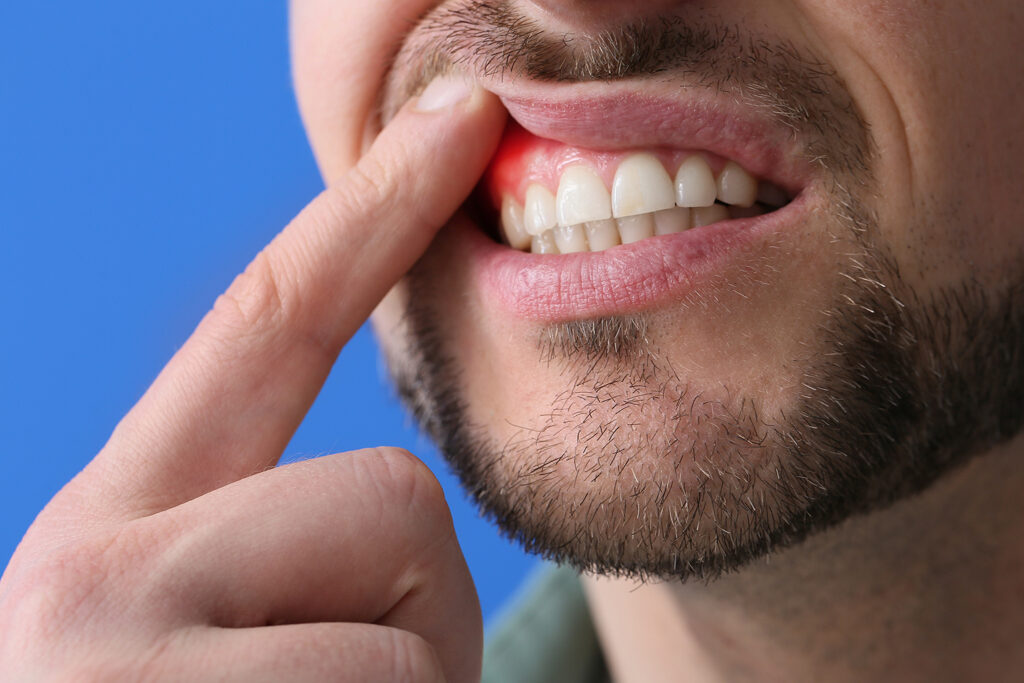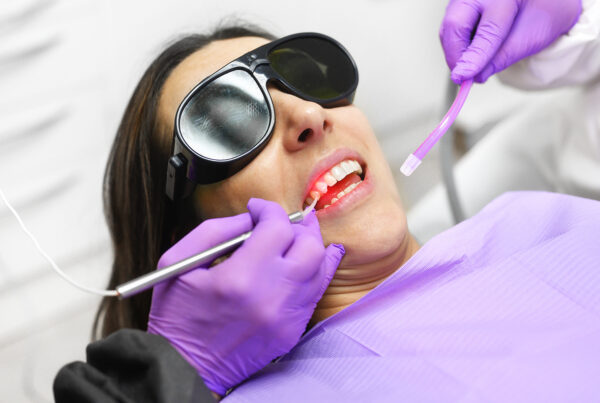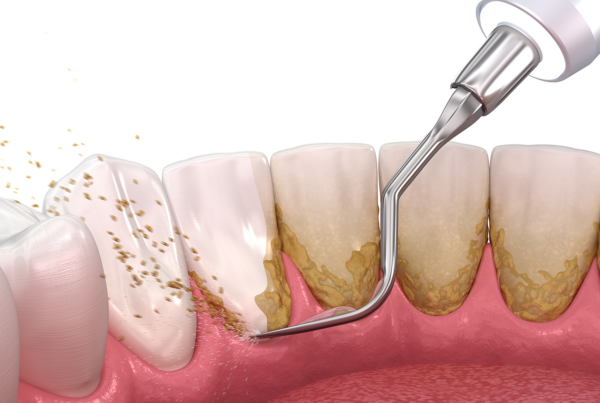Are you tired of dealing with persistent gum issues, bad breath, or loose teeth? Has your dentist recommended full mouth debridement as a potential solution? If so, you’re in the right place! In this blog post, we’ll dive into the world of full mouth debridement – a powerful and effective treatment for advanced periodontal disease. We’ll explore what this procedure entails, its benefits, and why it could be the answer you’ve been seeking for a healthier, more confident smile.

What Happens During Debridement?
In a nutshell, full mouth debridement involves the meticulous removal of plaque and tartar buildup from your teeth and gums, followed by smoothing the root surfaces to promote healing and prevent future buildup. Now, let’s dive deeper into the process and break down each step, so you have a clear understanding of what to expect during this transformative procedure.
Step 1: Preparing for the Procedure
Before diving into the debridement itself, your dentist or dental hygienist will perform a thorough oral examination to assess the extent of your periodontal disease. They may also take X-rays to get a better view of your teeth and jawbone. This will help them determine the right course of action for your specific case.
Step 2: Numbing and Comfort Measures
Your comfort is a top priority during full mouth debridement. To ensure you feel at ease throughout the procedure, your dental professional will typically use a local anesthetic to numb the areas being treated. They may also offer additional comfort measures, such as nitrous oxide (laughing gas) or sedation, depending on your anxiety levels and preferences.
Step 3: The Debridement Process
Once you’re comfortable and numb, the actual debridement begins. Your dental professional will use specialized tools, such as ultrasonic scalers and hand instruments, to meticulously remove plaque and tartar buildup from both above and below the gum line. This process is crucial for eliminating the harmful bacteria that contribute to periodontal disease.
Step 4: Root Planing
In addition to removing plaque and tartar, your dental professional will also smooth out the root surfaces of your teeth during a process called root planing. This step helps to promote healing by making it more difficult for bacteria to accumulate on the roots and reducing inflammation in the surrounding gum tissue.
Step 5: Post-Procedure Care
Once the full mouth debridement is complete, your dental professional will discuss the necessary post-procedure care and follow-up appointments. They may recommend more frequent cleanings and visits to monitor your progress and ensure your gums are healing properly.
So, there you have it! Full mouth debridement is a comprehensive and effective way to tackle advanced periodontal disease, giving you a fresh start on the journey to a healthier, happier smile.
Is Full Mouth Debridement Necessary?
Full mouth debridement is necessary when there is extensive plaque and tartar buildup, typically due to advanced periodontal disease, which cannot be effectively addressed with a standard dental cleaning. Let’s discuss the factors that may indicate the need for this procedure and how it can help you regain your oral health.
Determining the Need for Debridement
Your dentist will carefully evaluate your oral health to determine if full mouth debridement is necessary for you. Some key indicators that may signal the need for this procedure include:
Advanced Periodontal Disease: If you’re experiencing symptoms like swollen or bleeding gums, persistent bad breath, or loose teeth, these may be signs of advanced periodontal disease. In such cases, full mouth debridement can help halt the progression of the disease and encourage healing.
Heavy Plaque and Tartar Buildup: When plaque and tartar accumulate to an extent where it’s challenging for your dentist to accurately assess your gum health, full mouth debridement becomes necessary to remove the buildup and obtain a clearer picture of your oral health.
Deep Gum Pockets: If your gum pockets measure 4mm or more, it’s a sign that periodontal disease has advanced, and a regular cleaning may not be sufficient. Full mouth debridement can address this issue by thoroughly cleaning the deep pockets and root surfaces.
Ineffective Oral Hygiene: If you have struggled with maintaining a proper oral hygiene routine and your regular dental cleanings haven’t been enough to manage your oral health, your dentist may recommend full mouth debridement to get you back on track.
The Benefits of Full Mouth Debridement
By addressing these issues, full mouth debridement offers several benefits:
Improved Oral Health: Debridement can help eliminate harmful bacteria, reduce inflammation, and promote gum healing, ultimately leading to better overall oral health.
Prevention of Tooth Loss: By treating periodontal disease early and effectively, full mouth debridement can help prevent tooth loss caused by weakened gums and bone structures.
Fresher Breath: By removing plaque, tartar, and bacteria, debridement can help eliminate bad breath associated with gum disease.
Enhanced Confidence: With improved oral health and a cleaner smile, you’ll feel more confident in your day-to-day life.
Is a Full Mouth Debridement the Same as a Deep Cleaning?
While full mouth debridement and deep cleaning (also known as scaling and root planing) share some similarities, they are not the same, as debridement focuses on removing extensive plaque and tartar buildup, while deep cleaning targets the root surfaces and gum pockets. Let’s dive deeper into the differences and purposes of each procedure.
Full Mouth Debridement:
As we’ve discussed, full mouth debridement is a procedure that involves the thorough removal of heavy plaque and tartar deposits from your teeth and gums. This treatment is often recommended when there’s significant buildup, making it difficult for your dentist to accurately assess your oral health and gum condition. The primary goal of debridement is to create a clean environment that allows for better evaluation and treatment planning.
Deep Cleaning (Scaling and Root Planing):
Deep cleaning, on the other hand, is a more targeted procedure that specifically addresses periodontal disease. It involves two main steps: scaling and root planing. Scaling is the process of removing plaque and tartar from above and below the gum line, while root planing smooths the root surfaces to help prevent future buildup and promote gum reattachment. Deep cleaning is typically recommended when gum pockets are deeper than 4mm and there are signs of gum inflammation or bone loss.
Key Differences:
Purpose: Debridement is primarily focused on removing heavy plaque and tartar buildup to enable a proper evaluation of your oral health, while deep cleaning aims to treat periodontal disease by addressing gum pockets and root surfaces.
Extent of Cleaning: Debridement is a more extensive procedure, as it tackles significant plaque and tartar deposits, whereas deep cleaning is a more focused treatment, targeting specific areas affected by periodontal disease.
Indications: Debridement is often recommended when there’s substantial buildup that impedes accurate oral health assessment, while deep cleaning is advised when gum pockets are deeper than 4mm and there’s evidence of gum inflammation or bone loss.
Take Control of Your Oral Health: Schedule an Appointment Today!
Don’t let advanced periodontal disease or excessive plaque and tartar buildup hold you back from enjoying a healthy, confident smile! Our experienced dental professionals at Encino Dental Studio are here to guide and support you through the journey towards optimal oral health. By scheduling an appointment with us, you can receive a personalized evaluation and discuss whether full mouth debridement or another treatment option is best suited for your needs. Don’t wait any longer – take control of your oral health and give your smile the care it deserves. Contact us today to book your appointment!








